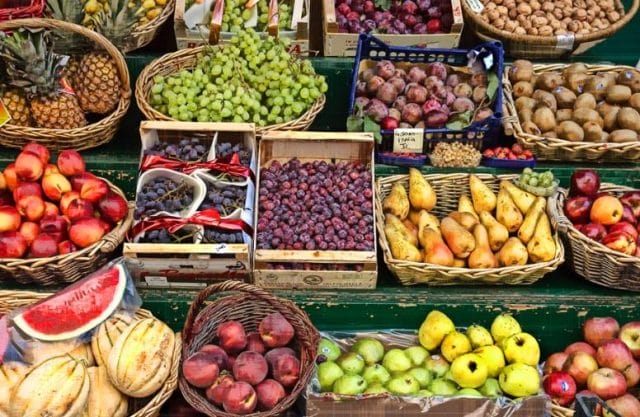Over the past twenty years, farmers’ markets have exploded in the United States, nearly quintupling in popularity. Like most booms, this one came with a sub-culture.
You’ve seen them: organic-granola-munchers, hemp-bag-toters, camote-connoisseurs. They cross-examine zucchinis and berries with the assiduousness of a barn owl, and can name at least seven different types of radishes. They are the “crunchies” — the true, dedicated patrons of America’s farmers’ markets.
Before we proceed, let’s just clarify this: farmers’ markets are awesome. With the rise of supermarkets in the 1930s, the direct, “greens-for-green” transaction from farmers to customer was increasingly ousted. In an age where the majority of Americans buy wilted, uninspiring produce from major chains and retailers, farmers’ markets are a beacon of hope for those seeking crunchy respite. By most accounts, they not only provide the community with fresher, healthier goods, but assist in supporting local growers.
At Priceonomics, we like to occasionally quantify generational tropes by conducting extremely scientific studies (see The Hipster Music Index), so we decided to find out exactly where farmers’ markets are most prevalent. More aptly put, which cities (and states) house the “crunchiest” populations?
![]()
Every year in August, at the height of National Farmers’ Market Week, the U.S. Department of Agriculture publishes its annual list of “directory-listed” farmers’ markets (registration is voluntary, but according to the USDA the vast majority of markets self-report). As of 2013, there were 8,144 of them in the country.
The heat map below represents the concentration of these markets across the U.S., grouped by city (zoom in or use the search bar in the upper-right corner to find out how many farmers’ markets there are in your vicinity):
Data via USDA; visualized by Priceonomics, using CartoDB
Next, we narrowed the data down to U.S. cities with populations of 100,000 or more, and divided the number of farmers’ markets by said populations to get per-capita figures, or “the crunch factor.” Below, we’ve ranked these cities from highest to lowest per-capita (sort the “Farmers’ Markets per 100,000 Population” column to see which cities are the least crunchy):
Ranking of “Crunchiest” U.S. Cities
Astonishingly, Columbia, South Carolina takes the (non-GMO verified) cake with one farmers’ market for about every 6,000 of its inhabitants. This can, in part, be attributed to it’s produce-friendly Unitarian, United Methodist, and Lutheran churches: every weekend, 12 of them turn their courtyards into an open market of apples, artisan bread, and conflict-free nuts. Madison, Wisconsin and Minneapolis, Minnesota follow in tow, each toting respectable levels of crunchiness.
Lansing, Michigan also makes a somewhat surprising appearance in the top 5, riding on the wing-tail of its famous Lansing City Market, which the city just spend $1.6 million renovating.
College proximity also appears to be a factor in farmers’ market popularity: Columbia (SC), Madison, Lansing, Richmond, Columbia (MO), and Wilmington are all college towns rooted in agricultural areas.
At the bottom of the list is California’s own Santa Anita, with a mere one market to sate its 330,920 residents. But Texans seem to be the ultimate anti-crunchers: the Lone Star State contains 4 of the 10 least farmers’ market-friendly cities.
Mike Crawford, a partner at rancher-owned cooperative Chisholm Trail Longhorn Beef, notes that the state once enjoyed a tradition of direct-from-farmer commerce, but the old ways have largely been vanquished. “The farmers market is a tradition that we really hate to see fading across Texas and in urban areas,” he says.
But are the United States’ major cities representative of crunchy folks as a whole? Below, we organized the data by state, yielding the country’s most devout farmers’ market populations. For comparison’s sake, the overall farmers’ market per capita average in the United States is 2.57.
Congratulations, Vermont! You are the unheralded guru of crunchiness.
With 99 farmers’ markets tending to a population of 626,630, the state boasts one market for every 6,328 of its residents, which is leaps and bounds above any other state. Vermont has no cities with populations of over 100,000, and no cities with alarming amounts of farmers’ markets (its largest city, Burlington, has 5), but markets seem to consistently pervade the state’s entire landscape.
Interestingly, Vermont is also the state with the most 4-year universities per capita. In fact, every school in the top five in this category (Vermont, South Dakota, North Dakota, Maine, Nebraska) appears in the top 15 on the farmers’ market per capita list. Likewise, of the bottom five in this category (California, Arizona, Texas, New Jersey, Wyoming), all but Wyoming are among the 15 states with the lowest farmers’ markets per capita ratio. It would appear that college students are particularly crunchy.
And what about our friends in Texas? It appears not everything is bigger there: with over 26 million inhabitants and only 182 farmers’ markets, they have the smallest per capita ratio of any state — by a long shot.
But the real question is: how crunchy are you?
This post was written by Zachary Crockett, a farmers’ market regular. Follow him on Twitter here, or Google Plus here.




